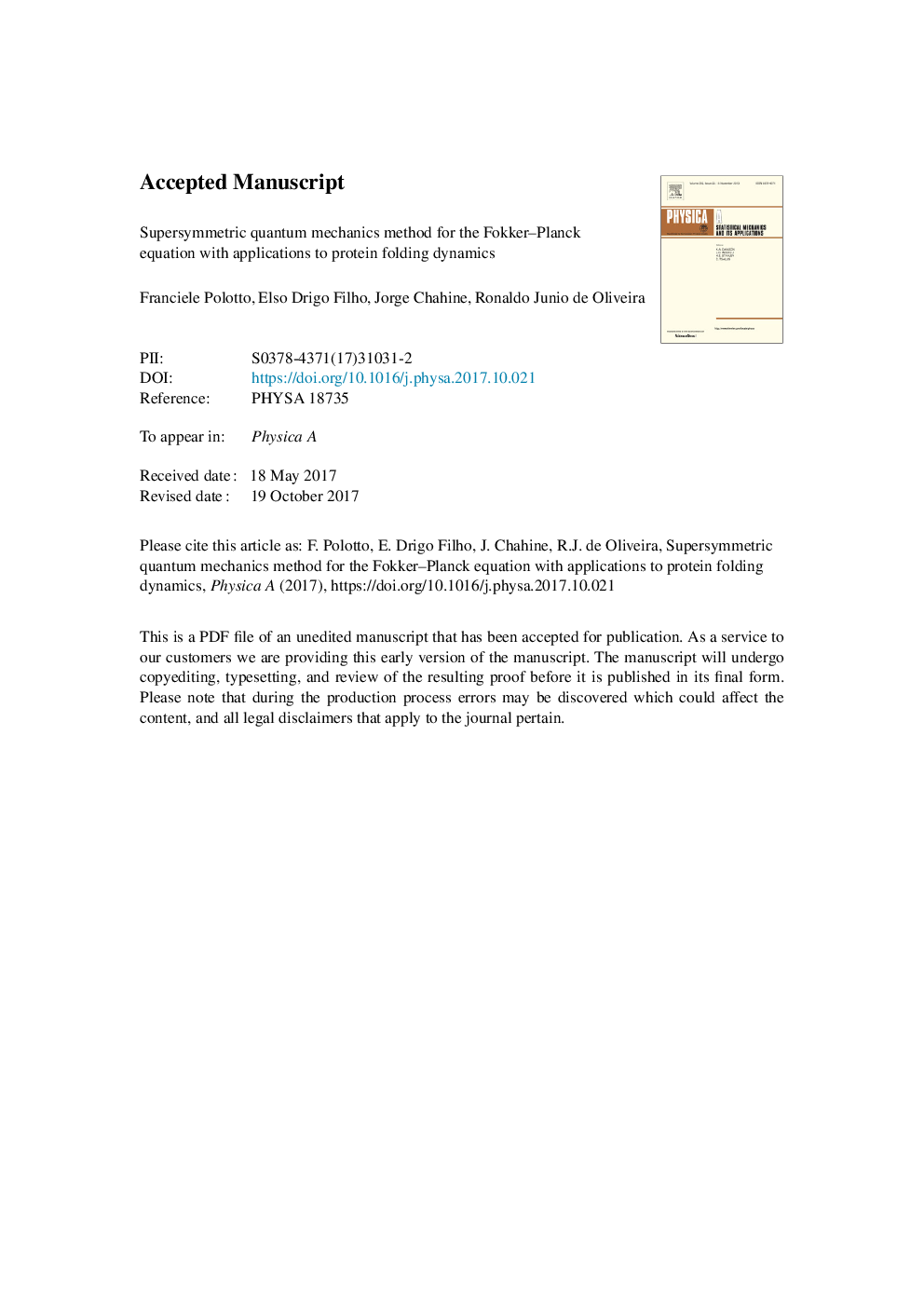| Article ID | Journal | Published Year | Pages | File Type |
|---|---|---|---|---|
| 7376357 | Physica A: Statistical Mechanics and its Applications | 2018 | 46 Pages |
Abstract
This work developed analytical methods to explore the kinetics of the time-dependent probability distributions over thermodynamic free energy profiles of protein folding and compared the results with simulation. The Fokker-Planck equation is mapped onto a Schrödinger-type equation due to the well-known solutions of the latter. Through a semi-analytical description, the supersymmetric quantum mechanics formalism is invoked and the time-dependent probability distributions are obtained with numerical calculations by using the variational method. A coarse-grained structure-based model of the two-state protein Tm CSP was simulated at a Cα level of resolution and the thermodynamics and kinetics were fully characterized. Analytical solutions from non-equilibrium conditions were obtained with the simulated double-well free energy potential and kinetic folding times were calculated. It was found that analytical folding time as a function of temperature agrees, quantitatively, with simulations and experiments from the literature of Tm CSP having the well-known 'U' shape of the Chevron Plots. The simple analytical model developed in this study has a potential to be used by theoreticians and experimentalists willing to explore, quantitatively, rates and the kinetic behavior of their system by informing the thermally activated barrier. The theory developed describes a stochastic process and, therefore, can be applied to a variety of biological as well as condensed-phase two-state systems.
Related Topics
Physical Sciences and Engineering
Mathematics
Mathematical Physics
Authors
Franciele Polotto, Elso Drigo Filho, Jorge Chahine, Ronaldo Junio de Oliveira,
